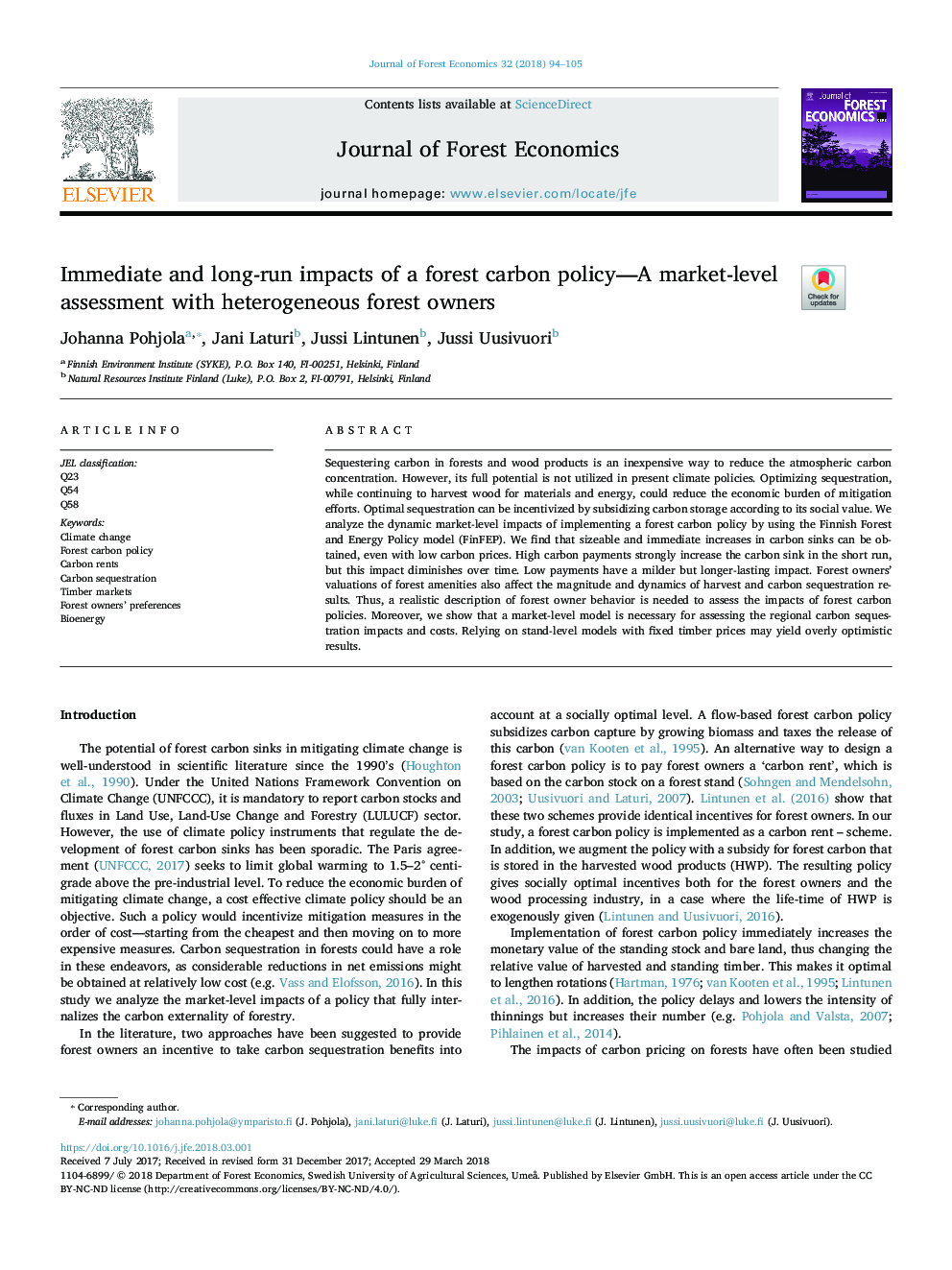| Article ID | Journal | Published Year | Pages | File Type |
|---|---|---|---|---|
| 9951707 | Journal of Forest Economics | 2018 | 12 Pages |
Abstract
Sequestering carbon in forests and wood products is an inexpensive way to reduce the atmospheric carbon concentration. However, its full potential is not utilized in present climate policies. Optimizing sequestration, while continuing to harvest wood for materials and energy, could reduce the economic burden of mitigation efforts. Optimal sequestration can be incentivized by subsidizing carbon storage according to its social value. We analyze the dynamic market-level impacts of implementing a forest carbon policy by using the Finnish Forest and Energy Policy model (FinFEP). We find that sizeable and immediate increases in carbon sinks can be obtained, even with low carbon prices. High carbon payments strongly increase the carbon sink in the short run, but this impact diminishes over time. Low payments have a milder but longer-lasting impact. Forest owners' valuations of forest amenities also affect the magnitude and dynamics of harvest and carbon sequestration results. Thus, a realistic description of forest owner behavior is needed to assess the impacts of forest carbon policies. Moreover, we show that a market-level model is necessary for assessing the regional carbon sequestration impacts and costs. Relying on stand-level models with fixed timber prices may yield overly optimistic results.
Related Topics
Life Sciences
Agricultural and Biological Sciences
Agronomy and Crop Science
Authors
Johanna Pohjola, Jani Laturi, Jussi Lintunen, Jussi Uusivuori,
